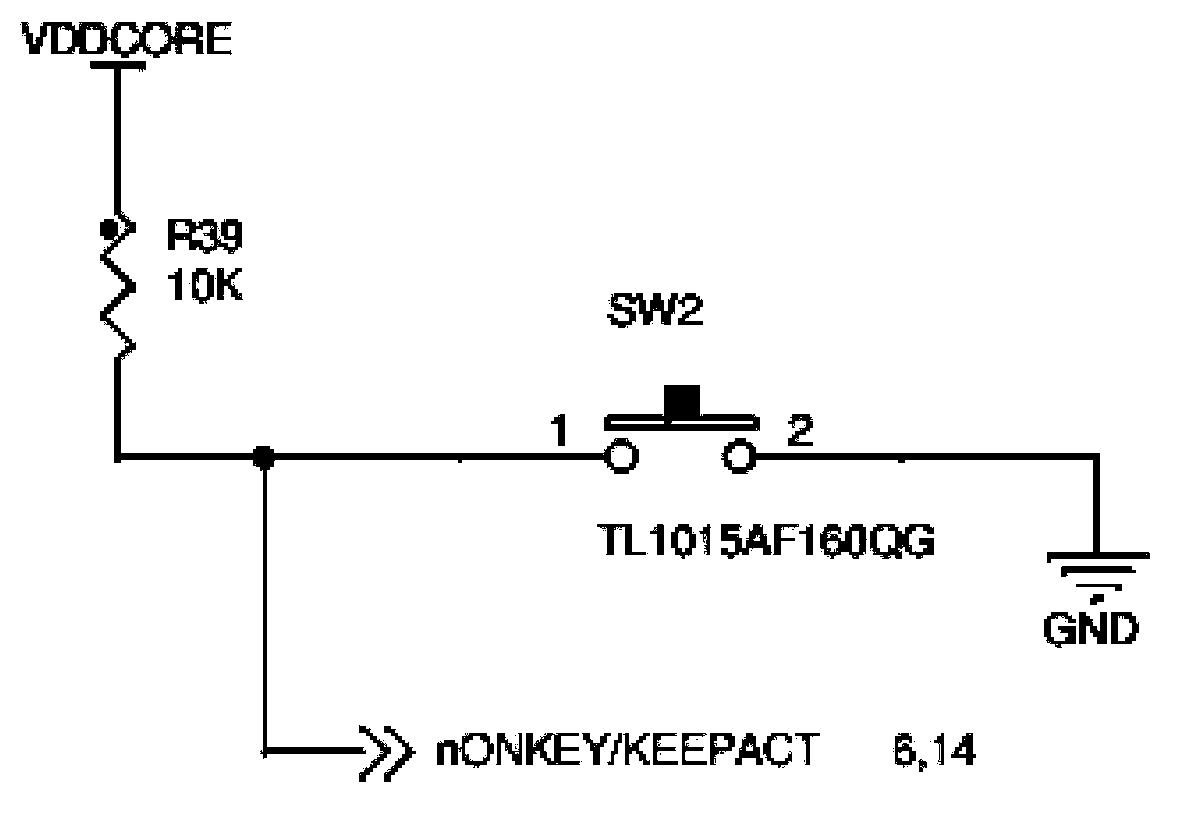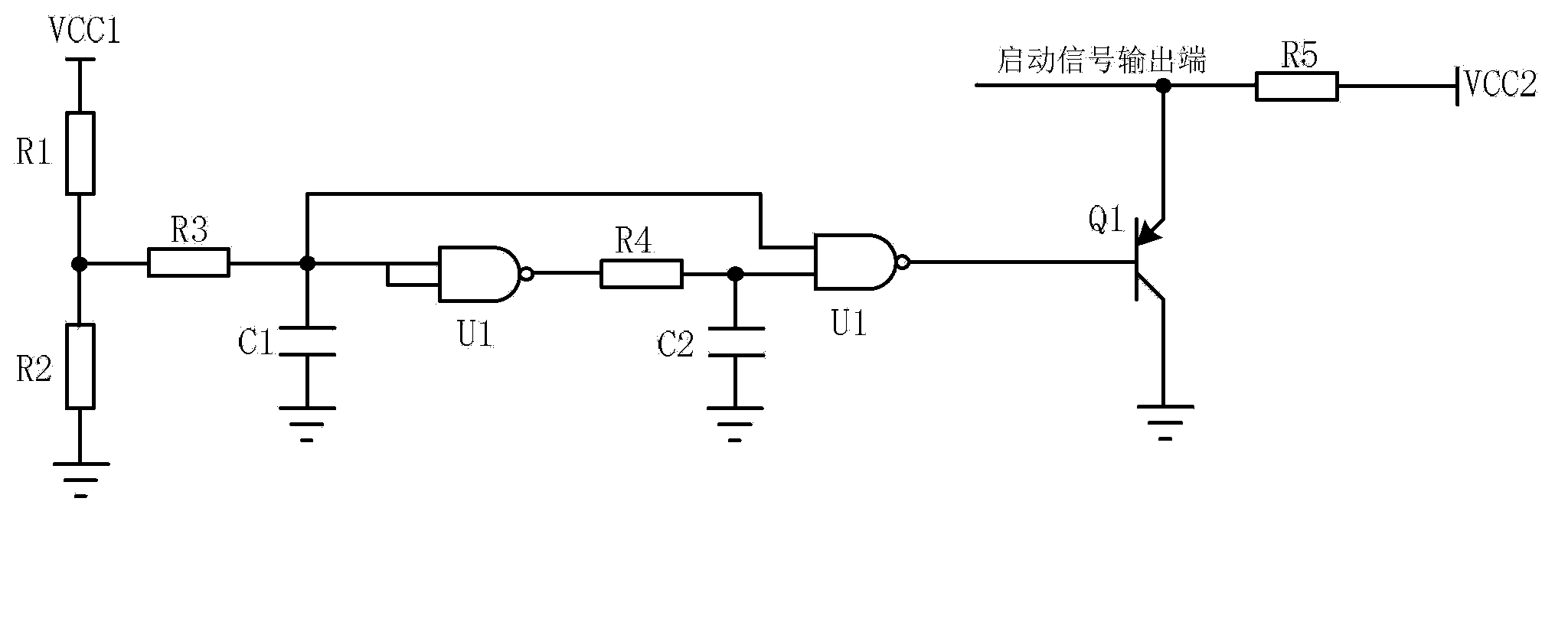Self-startup circuit and method
A self-starting and circuit technology, applied in the electronic field, can solve problems such as inability to start chips, and achieve the effect of high stability and simple structure
- Summary
- Abstract
- Description
- Claims
- Application Information
AI Technical Summary
Problems solved by technology
Method used
Image
Examples
Embodiment 1
[0038] figure 2 It is a functional module block diagram of a self-starting circuit system provided by Embodiment 1 of the present invention, such as figure 2 Shown:
[0039] A self-starting circuit comprising:
[0040] The sampling voltage module 201 divides the power supply voltage to obtain a sampling voltage; the single pulse generation module 202 is connected with the sampling voltage module 201 and generates a single pulse signal by using the sampling voltage; the switching circuit module 203 is connected with the single pulse generation module 202 , according to the single pulse signal to control the on-off of the start-up circuit, thereby generating the start-up signal.
[0041] Wherein, the sampling voltage module 201 further includes:
[0042] The first voltage-dividing resistor and the second voltage-dividing resistor, the first voltage-dividing resistor and the second voltage-dividing resistor are connected in series, connected between the power supply and the ...
Embodiment 2
[0052] image 3 It is a schematic diagram of a self-starting circuit preferably provided by Embodiment 2 of the present invention, such as image 3 Shown:
[0053]The first voltage dividing resistor R1 and the second voltage dividing resistor R2 form a sampling voltage module, the first voltage dividing resistor R1 and the second voltage dividing resistor R2 are connected in series, connected between the power supply and the ground, and divide the power supply voltage, To obtain the sampling voltage, by adjusting the resistance of the first voltage dividing resistor R1 and the second voltage dividing resistor R2, different sampling voltages can be obtained to meet the requirements of different sampling voltages. The first voltage dividing resistor R1 and the second voltage dividing resistor R1 The connection point of the resistor R2 is used as the sampling voltage output terminal.
[0054] The first current-limiting resistor R3, the first capacitor C1, the first logic gate U...
Embodiment 3
[0067] Figure 5 It is a schematic diagram of a self-starting circuit preferably provided by Embodiment 3 of the present invention, as shown in Figure 5 Shown:
[0068] The difference between this embodiment and Embodiment 2 is that this embodiment preferably adopts the following connection mode: connect the first delayed voltage output terminal to one input terminal of the first logic gate U1, and the other input terminal of the first logic gate U1 One input terminal is connected to the sampling voltage output terminal, the two input terminals of the NAND gate U2 are respectively connected to the first delayed voltage output terminal and the second delayed voltage output terminal, and the output terminal of the NAND gate U2 outputs a single pulse Signal.
[0069] Other devices and connection methods of this embodiment are the same as those of Embodiment 2, and the same parts will not be repeated here.
[0070] The basic principle of the circuit connected by this connectio...
PUM
 Login to View More
Login to View More Abstract
Description
Claims
Application Information
 Login to View More
Login to View More - R&D
- Intellectual Property
- Life Sciences
- Materials
- Tech Scout
- Unparalleled Data Quality
- Higher Quality Content
- 60% Fewer Hallucinations
Browse by: Latest US Patents, China's latest patents, Technical Efficacy Thesaurus, Application Domain, Technology Topic, Popular Technical Reports.
© 2025 PatSnap. All rights reserved.Legal|Privacy policy|Modern Slavery Act Transparency Statement|Sitemap|About US| Contact US: help@patsnap.com



